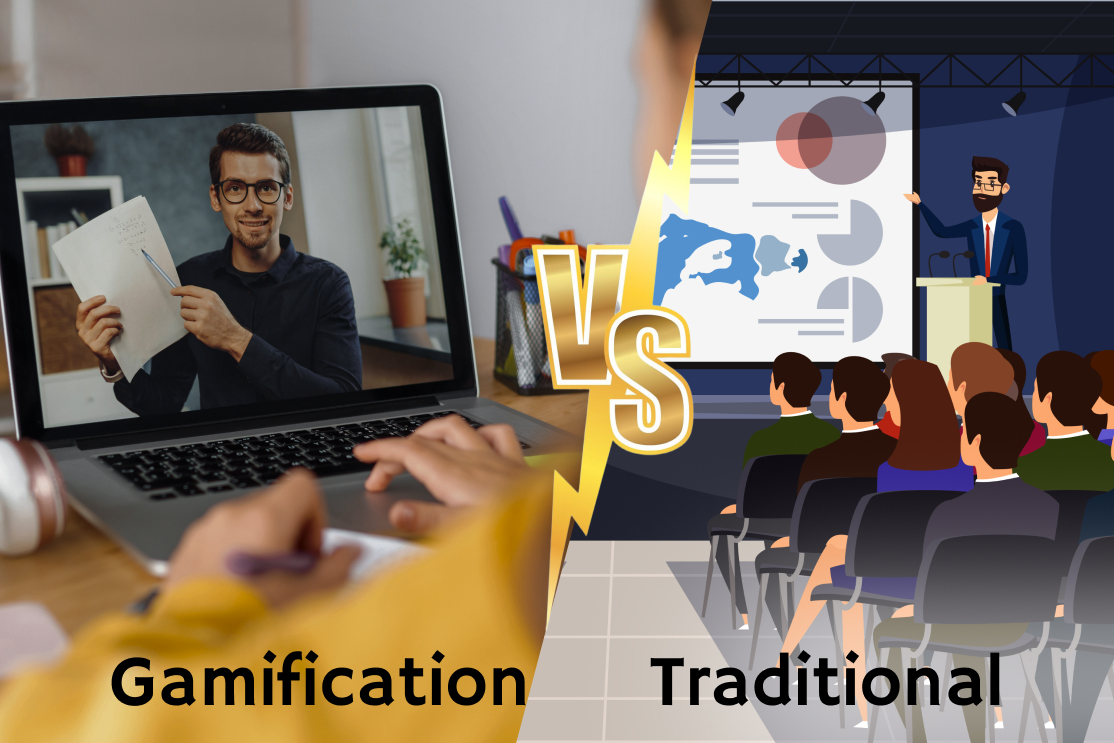Blogs
-

Gamification vs Traditional Training: Which One Wins?
Corporate training is essential for building a skilled and productive workforce. However, the approach to training can significantly impact how well employees retain knowledge and apply it in their roles. Two popular methods often compared are traditional learning and gamification. But which one is better? Let’s dive in.
Traditional Learning: The Old Reliable
Traditional learning methods include instructor-led sessions, lectures, workshops, and e-learning modules. These approaches have been used for decades and are effective for structured knowledge transfer, especially when dealing with detailed or complex subjects.
Advantages of Traditional Learning:
Clear Structure: It provides a consistent curriculum, ensuring all learners receive the same information.
Experienced Trainers: Employees benefit from the expertise of seasoned instructors.
Comprehensive Coverage: It’s great for in-depth training on policies, procedures, and technical skills.
However, traditional learning often faces challenges. Long sessions, heavy content, and lack of interaction can make it difficult for employees to stay engaged.
Gamification: Learning Made Fun
Gamification takes elements of game design—like points, leaderboards, badges, and challenges—and integrates them into training programs. This method has gained traction in corporate training because it makes learning interactive, engaging, and fun.
Advantages of Gamification:
Increased Engagement: Employees are motivated to participate when they can earn rewards or compete with peers.
Better Retention: Interactive elements help learners remember concepts more effectively.
Real-Time Feedback: Instant feedback through scores or achievements helps employees track their progress.
Customizable Experiences: Gamification can be tailored to fit the needs of specific roles or departments.
Despite its appeal, gamification may not be ideal for every situation. It requires technological investment and careful design to ensure it aligns with learning objectives.
The Verdict: A Hybrid Approach
Both traditional learning and gamification have their strengths and weaknesses. The choice between them depends on the context and goals of the training. For example:
Use traditional learning for foundational topics and compliance training.
Leverage gamification for skill development, onboarding, and soft skills training.
Many organizations are now adopting a blended approach—combining the best of both methods. For instance, start with a traditional classroom session to explain the basics, and follow up with gamified e-learning modules to reinforce the concepts.
Conclusion
In the battle of gamification vs. traditional learning, there is no one-size-fits-all winner. The key is to understand your organization’s training needs and tailor your approach accordingly. By striking the right balance, you can create an engaging and effective learning experience that drives results.